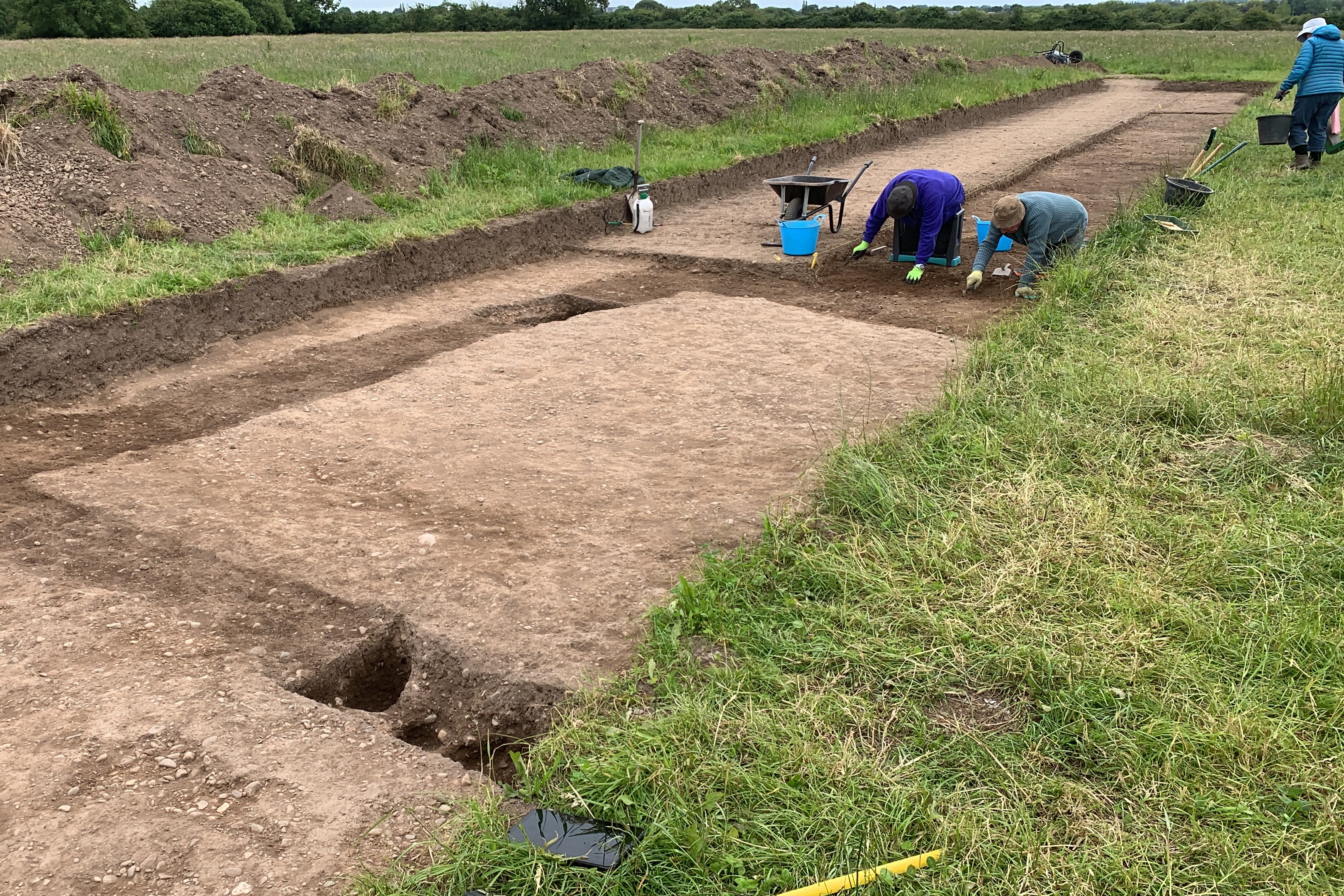Exciting archaeological discoveries have emerged in Wrexham, Wales, where researchers uncovered two “extremely rare” structures from the early medieval period and signs of a Roman settlement during a recent excavation.
This excavation, conducted by a team that included the University of Chester, the Trust for Welsh Archaeology, and the U.K. government’s Portable Antiquities Scheme, revealed significant Roman-era features and materials alongside remnants dating back to the early medieval period.

Among the findings was a trackway, various building materials, and ceramics, including a stamped tile associated with the Roman military. The site is located near historic Roman tile and pottery works in Holt, Denbighshire County.
Researcher Matthews noted that previous perceptions of the area as a “hinterland” around Chester may need to be revised due to a lack of thorough investigation rather than an actual absence of archaeological significance.
The team also identified two rectangular timber structures likely to be early medieval longhouses, characterized by their long, communal design—typical of the period between the 6th and 11th centuries A.D. Matthews emphasized the rarity of early medieval remains, as simple wooden structures often do not survive well over time.
Initial signs of the site’s archaeological potential surfaced during prior small-scale investigations by the Holt Local History Society and a local metal detectorist, which uncovered numerous Roman artifacts from 2013 to 2017.
After these earlier finds, the team pursued further explorations, leading to geophysical surveys that outlined a planned settlement and associated road systems. Excavations this summer confirmed the presence of Roman remains and revealed the structures from the early medieval era adjacent to the settlement.
While the relationship between the Roman settlement and the later structures remains unclear, some remnants of roadways might have persisted into the early medieval period.
Caroline Pudney, a senior lecturer in archaeology at the University of Chester, expressed optimism about uncovering evidence of Roman life based on prior discoveries, though the identification of a definitive Roman structure has yet to occur. Matthews noted they might not be excavating the right areas, as certain Roman structures, like roundhouses, are challenging to spot in the current geology of Wrexham.
This site could potentially serve as a satellite settlement for laborers associated with the nearby legionary tile works or related industries. As the team moves forward with post-excavation analysis, they hope to yield further insights into the community that thrived in this area.
